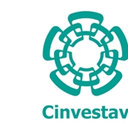A novel fluorinated stilbene exerts hepatoprotective properties in CCl(4)-induced acute liver damage.
Raktažodžiai
Santrauka
There has been a recently increase in the development of novel stilbene-based compounds with in vitro anti-inflamatory properties. For this study, we synthesized and evaluated the anti-inflammatory properties of 2 fluorinated stilbenes on carbon tetrachloride (CCl₄)-induced acute liver damage. To achieve this, CCl₄ (4 g·kg(-1), per os) was administered to male Wistar rats, followed by either 2-fluoro-4'-methoxystilbene (FME) or 2,3-difluoro-4'-methoxystilbene (DFME) (10 mg·kg(-1), per os). We found that although both of the latter compounds prevented cholestatic damage (γ-glutamyl transpeptidase activity), only DFME showed partial but consistent results in the prevention of necrosis, as assessed by both alanine aminotransferase activity and histological analysis. Since inflammatory responses are mediated by cytokines, mainly tumour necrosis factor α (TNF-α), we used the Western blot technique to determine the action of FME and DFME on the expression level of this cytokine. The observed increase in the level of TNF-α caused by CCl₄ administration was only prevented by treatment with DFME, in agreement with our biochemical findings. This result was confirmed by measuring interleukin-6 (IL-6) levels, since the expression of this protein depends on the level of TNF-α. In this case, DFME completely blocked the CCl₄-induced increase of IL-6. Our results suggest that DFME possesses greater anti-inflammatory properties in vivo than FME. DFME constitutes a possible therapeutic agent for liver disease and could serve as a template for structure optimization.


